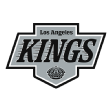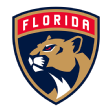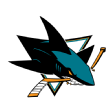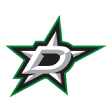As is tradition, there will be a flurry of trades ahead of the NHL trade deadline at 3 p.m. ET March 1.
What kind of value have the general managers involved generated for their franchises? That's where ESPN Insider Craig Custance comes in.
After consulting with GMs, scouts, coaches and players around the league, Craig issues his trade grades for each team involved in this season's major moves.
To be clear, these are not necessarily predictions of how the deals will be viewed several years down the road (when any prospects or picks involved will have grown to maturity). Rather, this is an appraisal of what the GMs involved were able to do, given the current market conditions, and yes, the impending expansion draft for the Vegas Golden Knights has been taken into account.
In short, this is your one-stop shop for an assessment of all the major moves, and the page will be continuously updated as the deals are made up until the deadline.
Here we go ...
March 1
Mark Streit goes from Philadelphia to Pittsburgh, with a layover in Tampa Bay
Pittsburgh Penguins get: D Mark Streit
Tampa Bay Lightning get: 2018 fourth-round pick
Philadelphia Flyers get: C Valtteri Filppula, 2017 fourth-round pick and 2017 seventh-round pick
Flyers: B

At first blush, this looked like a head-scratcher for the Flyers. It looked like they bailed the Lightning out of an expansion draft issue, only to add their own. The Flyers will now have to protect Valtteri Filppula in the expansion draft because of his no-movement clause.
But diving in, there's plenty to like with this fit. Filppula brings a veteran, playmaking center into the equation for the Flyers next season, and those are hard to get. He has one year left on his contract at $5 million, and when it was suggested to Lightning GM Steve Yzerman that Filppula can still play, Yzerman interrupted to correct that.
"He can do more than play," Yzerman said.
He isn't a first-line center, but he can certainly center a second or third line. He can help on the power play and the penalty kill. He's always going to be in the correct spot positionally, so he'll help with structure in Philadelphia.
"Any of the [Matt] Duchene suitors could use Filppula," an executive said heading into the deadline.
If Filppula were an unrestricted free agent after this season, he might have netted a deal close to what Martin Hanzal got. Teams value two-way centers that much this time of year. If Filppula hit free agency this summer, he would have cost the Flyers way more than one year at $5 million. Now Philadelphia gets a center for the rest of this season and next who, at worst, will get them back a nice return at next year's deadline if the fit doesn't work out in Philadelphia.
Lightning: A

Steve Yzerman did a masterful job working the deadline in order to create cap space both this year and next to put the Lightning back on track. The degree of difficulty to getting this trade done was high.
"[Filppula] had a list of teams, so that kind of limits what you can do," Yzerman said when we chatted about it after the deadline. "Teams are concerned about the expansion draft. ... I'm trying to not retain salary, not take salary back for this year and next year more importantly. It really makes it difficult to make a trade when you have to make [all that] work."
This trade gets the Lightning out of the expansion draft jam that came with having to protect Filppula. They needed his cap space next year to sign younger players such as Jonathan Drouin, Ondrej Palat and Tyler Johnson.
Yzerman got a third team involved to pull this off, showing the creativity he and the rest of his front office have in Tampa Bay. They'll miss Filppula in the short term, but it was a necessary subtraction for the long term.
Penguins: B

Streit is one of the best people in the game, and he was an important voice in the Flyers' locker room. He isn't the defenseman he used to be, but for a team looking to add depth on the back end, he's just about perfect.
"Third-pairing and insurance for injuries," one NHL scout texted when asked what role Streit would best play on the Penguins.
Said another: "Smart, puck-moving guy that helps any team. Obviously don't like his cap hit number, but he stills brings a lot of value."
Thanks to salary being retained by both the Flyers (who win the award for best salary retention of the deadline by paying 4.7 percent of Streit's freight) and the Lightning, salary isn't an issue. According to capfriendly.com, the cap charge on Streit ends up at just $1.76 million in Pittsburgh. For a defenseman with 21 points thus far this season, that's quite manageable. With the additions of Streit and Ron Hainsey, GM Jim Rutherford has provided plenty of insurance for a defense that has a bit of injury history.
Kings acquire Jarome Iginla from Avalanche
Los Angeles Kings get: F Jarome Iginla
Colorado Avalanche get: Conditional 2018 fourth-round draft pick
Kings: C

This is the kind of player GM Dean Lombardi loves to have when the playoffs roll around. It's a similar philosophy to bringing in Milan Lucic. The Kings have an identity, and that identity is as a big, strong, heavy group that will grind you down on a nightly basis. Iginla fits right in, and the expectation is he'll get a shot to play with Anze Kopitar on the top line.
Iginla also hasn't been particularly good this season. There isn't much gas left in the tank. He has just eight goals in 61 games after scoring 22 last season, which continues a steady decline in his scoring that started about the time he left Calgary. He was minus-21 this season in Colorado, well on his way to setting a career low in that category. But this has been a tough season to judge for Avalanche players. Most of the players are struggling on a bad team.
"It's probably not as bad as it looks," a Western Conference executive said of Iginla's season. "He's had a bad year, but a lot of players have had a bad year there."
Iginla conceded that this year has been a struggle in Colorado.
"We kind of spiraled ... and you lose your confidence as a group," Iginla said during a conference call after the trade. "I don't know if there's any one answer."
This reunites Darryl Sutter and Iginla after their time in Calgary and perhaps relights a flame under the 39-year-old right-winger. He had some of the best seasons of his career under Sutter, with the two nearly winning a Stanley Cup together in 2004. That relationship should help the transition.
"I'm looking forward to it," Iginla said. "It does make it easier, having that relationship. Every coach has a different style and way of communication. ... As a player, getting used to it can take some time."
Iginla hasn't been to the playoffs since 2014 with the Bruins, and he put up seven points in 12 games for Boston in that run. He was productive the spring before with the Penguins too, registering 12 points in 15 playoff games.
But that seems like a long time ago. The hope might be that Iginla can ignite Anze Kopitar, but the reality is that he might be best served in the bottom six, where he can add size, strength and maybe some inspiration to a dressing room that might want to see him go out on a high note.
Avalanche: B

There might be issues with the way the Avalanche maneuvered the trade deadline, but this isn't one of them. GM Joe Sakic handled his veteran forward with class and dignity in moving him to a contender without over-sweating the return.
Iginla talked with Sakic and his agent, Don Meehan, a couple weeks ago to discuss Iginla's future and placing him with a contender.
"Joe was great," Iginla said. "He said he would do whatever he could to help facilitate it."
TSN's Darren Dreger was the first to report that the conditional draft pick could go away if Iginla didn't meet conditions that were playoff-related or related to him re-signing with the Kings. Considering that he might retire after this season and the Kings might not make the playoffs, it's possible the Avalanche walk away with nothing.
Would you have liked to have seen a bigger return for Iginla? Sure. But this isn't 10 years ago, and his value was also impacted by a no-trade clause that gave him control over where he ended up. The Coyotes had a similar situation with veteran forward Shane Doan and didn't receive one call on deadline day gauging his availability.
More than anything, this ends up being a courtesy. Avalanche GM Joe Sakic called it a respect thing for Iginla as a player and as a person. He has earned it.
Panthers land Thomas Vanek from Red Wings
Florida Panthers get: F Thomas Vanek
Detroit Red Wings get: D Dylan McIlrath, Panthers' 2017 third-round pick. If Panthers make the playoffs, pick becomes the Coyotes' 2017 third-round pick.
Panthers: B

This certainly wasn't a lot for Florida to give up to add a player scoring at a rate of 0.79 points per game this season. Vanek is a veteran winger who has elite offensive skills. He's an incredible passer, so good that sometimes he overpasses or catches teammates off-guard.
Red Wings coach Jeff Blashill did a fantastic job maximizing Vanek's ability this season, including starting him in the offensive zone 73.3 percent of the time (!) during his even-strength shifts, according to hockey-reference.com.
Blashill also limited Vanek's ice time to 14:37 per game, with 2:50 each game coming on the power play. That is to say that Vanek has essentially evolved into an effective offensive role player, which is something the Panthers could use. Florida's power play is currently at No. 25 in the league, and they can use some help scoring. Vanek checks both boxes effectively.
But his game isn't without warts. There will be points where he'll drive coach Tom Rowe crazy with his unwillingness to contribute on the defensive side of the puck. That's one of the reasons playoff teams weren't willing to pay a premium for him, despite his 15 goals and 23 assists this season.
"Everybody knows exactly what he is. I could not do it myself," one NHL scout said. "The guy is a monster [offensively]. If you need help on your power play or something, great. How do you keep him interested if he's playing on your fourth line and power play? He might fall asleep."
But even this scout, who isn't a huge fan, conceded that Vanek is a huge talent.
"He has all of it," he said. "He's got it all."
Red Wings: C+

Red Wings fans are likely disappointed in the return for Vanek, especially after seeing how productive he was with Detroit.
But the league knows what Vanek is as a player. He's going to put up points, especially in the regular season, but his game doesn't necessarily lend itself to playoff success. He was held off the score sheet in 10 playoff games for the Wild during his last postseason and is a minus-18 in his past three playoff series appearances.
When he was closer to his peak as a player, he still netted the New York Islanders only a second-round pick and average prospect in 2014. As such, Detroit did OK to get a third-round pick and below-average prospect.
Which brings us to the No. 10 overall draft pick from 2010, Dylan McIlrath. He gives the Red Wings another body on defense, but expectations should be kept completely in check. He's a borderline NHL player but probably better suited in the AHL. He definitely adds toughness to a defense.
"Big, physical," one NHL scout texted after the deal.
That sounds promising. Then came the rest.
"Skating and puck skills are limited," he said. "Not an NHL player."
Or as another scout put it, he's a poor man's Dalton Prout. So this trade is essentially about the draft pick. It's a third-round pick, and it gives the Red Wings a lot of ammunition heading into the 2017 draft. That's the positive.
The third-round pick going to Detroit becomes the Coyotes' third-rounder (acquired by the Panthers in the Lawson Crouse trade) if the Panthers make the playoffs. Ideally for Detroit, the Red Wings would have received that pick instead without the condition, but this pick has the potential to be very close to the second round. If that's what happens, Detroit did just fine here.
Sharks add Hansen in exchange for Goldobin
San Jose Sharks get: F Jannik Hansen
Vancouver Canucks get: F Nikolay Goldobin, conditional 2017 fourth-round pick. The pick becomes a first-round pick if the Sharks win the Stanley Cup this spring.
Sharks: B-

This was a hefty price to pay for a forward who has 13 points this season and has never exceeded 40 points in any season in his career. But GM Doug Wilson was looking to add veteran versatility to his forward group, and Hansen brings that to the Sharks' lineup. He'll give coach Pete DeBoer all kinds of flexibility in where he can play up and down the lineup, and he'll pitch in on a penalty kill that has been pretty average this season (81.5 percent). He also has another year on his contract, so this isn't a pure rental.
But the most important element he brings to that lineup is speed. If the Sharks are going to win a Stanley Cup, and that's what a deal such as this is about, they'll have to be able to skate with the team that comes out of the East. Last spring, they couldn't keep up with the Penguins, and that series was never as close as the final tally indicated.
Since then, Wilson has addressed the speed deficiency by adding Mikkel Boedker and creating opportunity for the young forwards in the organization, similar to what the Penguins did to fill in around their stars last season. This trade makes the Sharks faster and gives them more flexibility in how they can play. They still have the size to take on the big teams in the West, but now they're better suited to skate with teams in the East.
"It's speed and mobility," one Eastern Conference executive said in breaking down his thoughts on Hansen. "I'm always mesmerized by his tools, and I wonder why he doesn't get more done."
Another executive liked the move as well, due to Jansen's versatility: "Hansen plays the game the way it must be played today -- with speed and tenacity. He is a prototypical seventh forward. He can move up and play in your top six and can kill penalties. He's a very valuable player. Good acquisition by San Jose."
Hansen also brings playoff experience to a roster loaded with it. He was a key player on the Canucks team that pushed the Bruins to seven games in the Stanley Cup finals in 2011. In all, he has 18 points in 64 playoff games. He isn't going to overwhelm you with offensive production, but for a team trying to win a Stanley Cup, he has the ingredients they need.
Canucks: A

What a difference a year makes for Canucks GM Jim Benning. He was crushed last year for not capitalizing by selling some of Vancouver's veterans at the deadline, with Dan Hamhuis ultimately leaving for nothing. This year, he has done a great job adding more young talent to a team that is starting to take form under his tenure.
The Alex Burrows trade was an absolute home run for Benning -- landing prospect Jonathan Dahlen -- and this one has the potential to be the same, with that fourth-round pick becoming a first if the Sharks win the Stanley Cup. It's a win-win condition; the Sharks would gladly pay, and the Canucks would be happy to collect.
Benning did well in adding Goldobin, who was the No. 27 overall pick in the 2014 draft. He's a winger loaded with skill, who has produced this season at the AHL level, with 41 points in 46 games.
The challenge for Goldobin is to continue rounding out his game so that if he isn't scoring goals, he's still contributing to the lineup. That's still a work in progress, and with the Sharks in win-now mode, they didn't have the time to wait.
He's a bit of a high-risk player who tries to make plays with his creativity. There's going to be some give and take when he's on the ice.
"He's got a real sneaky release when he shoots," Sharks scouting director Tim Burke said when we chatted about Goldobin in January.
There's real potential there, but it also appears that he was passed up on the depth chart in San Jose. They had injuries at forward this season, and Goldobin wasn't really given a big opportunity. If there was some internal dissatisfaction in his development for some reason, better to deal him now than when other teams catch on. But Burke believed he was close to being NHL-ready in January, and he'll get a real opportunity in Vancouver.
Feb. 28
Blackhawks bring back Johnny Oduya
Chicago Blackhawks get: D Johnny Oduya
Dallas Stars get: F Mark McNeill, conditional 2018 fourth-round pick that becomes a third-round pick if the Blackhawks advance to the Western Conference finals this season.
Blackhawks: B

GM Stan Bowman has been true to his word that he isn't giving up major assets for short-term gain, but in terms of depth deals, this is a good one for the Blackhawks. In Oduya, the Blackhawks know exactly what they're getting, aside from the injuries that have slowed him this season. He missed 15 games with an ankle injury but played 18:28 against the Bruins in his return Sunday. His performance was a little uneven in that game, but that's to be expected after the layoff. He should be better moving forward.
The Blackhawks also announced that Niklas Hjalmarsson is headed to the injured reserve, but this was a deal the Blackhawks were interested in making regardless, and the expectation is that Hjalmarsson's injury isn't serious.
This trade gives the Blackhawks the kind of depth on defense that they need to make a long playoff run. Oduya last played with the Blackhawks in 2015, but he has 219 career games with Joel Quenneville. The internal expectation is that he'll acclimate seamlessly with the group, fitting the style of play perfectly.
That belief was echoed externally too.
"He'll fit right back in with Q and the crew," one scout texted after the deal.
This is the second time Bowman has acquired Oduya at the trade deadline, but this time, Oduya is five years older, at 35. However, those who know him well don't expect age to be an issue.
"He's in excellent condition," one NHL source said. "Really takes care of himself. He's got something left."
Stars: C

There are two schools of thought with 24-year-old forward Mark McNeill. One is that he never got the proper opportunity with the Blackhawks, and this is a great chance for him to prove them wrong. The other is that he's a guy the Blackhawks know well and have been trying to move for some time, and there's probably a good reason it hasn't happened until now.
The Stars hope it's closer to the first theory and that a new opportunity helps the No. 18 overall pick from 2011 break through in a way he wasn't able to do in Chicago. A couple sources reached Tuesday night weren't optimistic.
He's got size and some speed, with this assessment from one executive about summing it up: "He might be able to play." Stars fans should keep their expectations in check on that front.
Dallas is also retaining half of Oduya's salary and needs the Blackhawks to advance to the third round of the playoffs in order to get a third-round pick in 2018. Otherwise, there's a good chance this deal ends up ultimately being Oduya for a fourth-round pick.
Oduya had trade protection, so there were likely limitations on where Dallas could send him, but this is a pretty average return for a two-time Stanley Cup-winning defenseman.
Red Wings deal Brendan Smith to the Rangers
New York Rangers get: D Brendan Smith
Detroit Red Wings get: 2017 third-round pick, 2018 second-round pick (originally Ottawa's pick)
Rangers: A-

Smith is a really likable defenseman. He does so many of the important things that teams need out of modern defensemen: He's a good skater, he moves the puck well, and he can jump into the play.
He has never quite lived up to some lofty expectations that were set because of his skill set and status as a 2007 first-round pick, but there's a case to be made that he was the second-best rental defenseman on the market behind Kevin Shattenkirk. Rangers fans just have to be ready for some inconsistency in his game, which includes the occasional questionable decision.
"I like him. If you could put him in your third pairing, I would be OK with him," one NHL scout said. "If he makes two good plays in a game, you know something bad is about to happen. ... For every two or three good plays, there are two or three bad plays."
Smith, however, has just about every tool you could ask for in a defenseman, and he's just 28 years old. For a guy who has been in the league for parts of six seasons, there's still a feeling that he has more to give. In that sense, this is a smarter trade for the Rangers than adding a veteran defenseman without an ounce of upside.
"He's got everything," the scout said. "He's tries hard. But if something bad is going to happen, it seems to happen to him."
Smith's analytics have always been strong, aided in part by usage. During his career, the Red Wings have controlled 54.9 percent of the even-strength shot attempts when he's on the ice. He has also started 57 percent of his even-strength shifts in the offensive zone during that span, according to hockey-reference.com.
His possession numbers are down this season, but part of that can be attributed to significant time with veteran Niklas Kronwall, who has slowed considerably as he's nearing the end of his career. A change of scenery and upgrade in partners should do Smith a lot of good in New York, where he'll be reunited with former Wisconsin teammates Derek Stepan and Ryan McDonagh.
Red Wings: A

This trade signals the end of an era in Detroit and the first of what might be a few selling trades at the deadline for a Red Wings franchise accustomed to adding for a playoff run. But GM Ken Holland did well in an unfamiliar role.
The other notable defensemen who fetched second-round picks or better -- Ron Hainsey and Shattenkirk -- usually played 20-plus minutes per night for their teams. Smith, as talented as he is, is a guy best-suited for the 17- or 18-minute role. That the Red Wings were able to get a pair of draft picks for a player who might be best-served as a third-pairing guy for the Rangers is a positive.
The underwhelming return the Blues received for Shattenkirk tempered expectations on the rental defenseman market, but this return was just about as good as Red Wings fans could've expected. That the 2018 second-round pick is the Ottawa Senators' might also work in Detroit's favor.
With this trade, according to capfriendly.com, the Red Wings have 10 picks in the 2017 draft, even after dealing a third-rounder to San Jose for prospect Dylan Sadowy in May. Holland likely isn't finished dealing, either.
Feb. 27
Capitals land Kevin Shattenkirk in blockbuster deal
Washington Capitals get: D Kevin Shattenkirk, G Pheonix Copley
St. Louis Blues get: 2017 first-round pick, conditional 2019 second-round pick, F Zach Sanford, F Brad Malone.
Capitals: A

Capitals GM Brian MacLellan went out and got the best rental player available, and in doing so has set the Capitals up as Stanley Cup favorites. The Capitals' defense is now the best in the East, with the dynamic Shattenkirk adding another element to the group. He generates a lot of offensive chances from the back end, and while there's risk in his game, the differential is a net positive.
Where this trade makes the Capitals really dangerous is on the power play. Washington already has a top-five power play, currently sitting at 21.8 percent, and Shattenkirk takes it up a notch, giving them another weapon to go with Alex Ovechkin, Nicklas Backstrom and T.J. Oshie.
"He's going to help their power play, which is already awesome," said one NHL coach after the trade.
Shattenkirk had been playing particularly well under new Blues head coach Mike Yeo, a development noted by an NHL scout who was impressed with the way he was starting to round out his game lately.
"His game since the coaching change is different," said the Western Conference scout. "He was all about putting points on the board, because that's money in the bank and that's the way he was playing. [Lately] he's been playing the two-way game that he was capable of playing. He's had better balance in his game. I really like him."
Shattenkirk's possession metrics have always been strong, with the Blues controlling the even-strength shot attempts 54.2 percent of the time during the past seven seasons when he was on the ice. He is among the top 10 defensemen in hockey in total points since the 2011-12 season, with 241 in 399 games.
He also is an easy-going personality who will be a quick fit into the Capitals' dressing room, where he'll have a friendly face waiting for him in former Blues teammate Oshie.
That personality, along with his offensive game, sometimes masks a competitive streak that goes underappreciated.
"He is a competitive guy. I think people don't realize that," said another NHL coach. "He's not afraid to get in somebody's grill around the net or in the corners."
This is a great addition for the Capitals, who appear poised for their long-awaited postseason breakthrough.
Blues: C

After letting David Backes and Troy Brouwer leave last season as free agents without any return, it's understandable that Blues GM Doug Armstrong wanted to get assets in return for Shattenkirk before he left as a free agent.
That's smart managing, and Armstrong has always done an enviable job juggling the long-term and short-term vision of the Blues.
But the expectation was that if the Blues were going to hurt their short-term chances, the return for Shattenkirk would be so beneficial that it would be worth it. With those high expectations out there, this deal falls short. It's the traditional rental return, but this wasn't a traditional situation. Shattenkirk was the best available defenseman, and the Blues are a playoff team that was playing well with Shattenkirk in the lineup. He might have been playing some of his best hockey of the season.
The first-round pick isn't likely to be a particularly good one, since the Capitals are now loaded for a long run this spring. It's also considered an average draft.
That the Capitals have to advance to the Eastern Conference finals in order for the 2019 second-round pick to kick in further weakens this deal. The Capitals are certainly more than capable of making it happen, but there's a pretty darn good chance the Penguins are waiting for them in the second round. That draft pick is no guarantee.
To really push this trade back in the Blues favor, forward Sanford has to be the difference-maker -- and that appears to be a long shot.
"Not sure he does anything great," said one source on Monday evening. "Bottom six."
ESPN Insider prospect guru Corey Pronman wasn't all that much more optimistic about Sanford, who has scored two goals in 26 games this season.
"Sanford isn't a foundational prospect. ... That being said, he's a tall forward who skates well for a guy his size, with decent skill and versatility in his game. He's not going to wow you, though," Pronman said.
Pronman projects him as a third-line player.
The 6-foot-4 Sanford was drafted in the second round in 2013, and the Capitals really liked his offensive instincts and were encouraged when he started to fill out his big frame. He ultimately might have been better served with another season at Boston College.
All that said, Armstrong's hands were tied on some level here. He had potentially more lucrative deals struck with both the Oilers and Lightning that got shot down when Shattenkirk declined to negotiate a contract extension with those teams.
So this had to be a pure rental deal. One potential suitor, the Rangers, had been moving first-round picks for years and wasn't eager to do it again. According to an NHL source, the Penguins never got too far on Shattenkirk trade talks, because the Blues' asking price was more than they were willing to do.
That left the Capitals and a trade that still needs a couple of developments to go the Blues' way to really make it balance out.
Brian Boyle traded to the Maple Leafs
Toronto Maple Leafs get: C Brian Boyle
Tampa Bay Lightning get: C Byron Froese, the highest of Toronto's 2017 second-round picks
Maple Leafs: A

Normally, the preference is to limit rental trades to teams with a real shot of winning a Stanley Cup. Using assets such as a second-round pick just to get into the postseason isn't necessarily a sound decision.
These Maple Leafs are unique. They have a young group of stars who have the potential to follow in the footsteps of teams such as the Blackhawks and Penguins and win big while players such as Auston Matthews and Mitch Marner are still young. That likely isn't going to happen this year, but making the playoffs and having some success this spring would go a long way toward making a run happen next year.
That's how close the young Maple Leafs are to real success. Brian Boyle is the perfect addition for this team.
They aren't giving up much. Froese is a player who will be immediately sent to the AHL, where he'll give Syracuse a nice bump. The Maple Leafs have multiple second-round picks, so they're dealing from an area of strength.
"They haven't been happy with their fourth-line center," one NHL executive said.
This fixes that issue. In Boyle, they get a big body (6-foot-6) with loads of playoff experience who is just about the perfect fourth-line center.
"He'll be really good for them," an NHL scout said after the deal. "He's a wonderful penalty killer, with his reach and his body. He blocks a lot of shots. I like him."
The Lightning have also used him as a net-front presence on the power play, though his biggest special-teams contributions will come on the penalty kill. The Maple Leafs currently have a top-10 penalty kill (83.3 percent), but it always helps to bring in reinforcements.
Toronto will have cap space after this season, and this gives them an extended look at Boyle and vice versa, to see if this is a long-term fit before he reaches free agency.
Lightning: B

Credit the Lightning for being decisive in their handling of Ben Bishop and Brian Boyle, but in light of the huge return for Martin Hanzal, this feels a bit underwhelming. It's not bad, but it's not a home run, either.
We've seen big fourth-line centers fetch healthy returns at the deadline in the past, such as Paul Gaustad and the first-round pick the Predators paid to land him, so it wasn't out of the realm of possibility that Boyle would have produced a bigger return.
But the reality is that the Maple Leafs aren't at the point in their development where it makes sense to give up a first-round pick for a rental player. Plus, the rental center market was down a team, with the Wild getting their guy early, so perhaps it's a bit unfair to compare this to the Hanzal deal.
The other conclusion might be that the Coyotes picked just the right time to make their deal, in striking early.
This trade gives the Lightning nine picks in the 2017 draft, with a possible 10th from the Kings. That's a lot of ammunition for GM Steve Yzerman during a summer in which he's going to need the versatility. He's expected to be active on the trade front, with a slew of restricted free agents to be signed, and he might like to have one of those picks on hand to keep Las Vegas from grabbing a key player in the expansion draft. This trade definitely gives the Lightning needed flexibility.
Feb. 26
Kings get Ben Bishop from the Lightning
Los Angeles Kings get: G Ben Bishop, 2017 fifth-round draft pick
Tampa Bay Lightning get: G Peter Budaj, D Erik Cernak, 2017 seventh-round pick, 2017 conditional pick
Kings: C

The last time we doubted a trade GM Dean Lombardi made at the deadline this much, it was when he acquired Marian Gaborik, and he ended up leading the Kings to a Stanley Cup. We've definitely been wrong about his deals in the past.
But this trade is a bit puzzling. Jonathan Quick returned from injury and stopped 32 of 33 shots in a win Saturday against the Ducks. Budaj has managed to keep the Kings in the playoff hunt all season while Quick recovered from his injury, and now that he's back, the Kings went out and got another No. 1.
In a conference call with reporters, Lombardi said the playoff race is tight, and this trade assures the Kings a No. 1 goalie every night. That's true.
Perhaps this trade is a sign that the Kings aren't exactly confident Quick's health will hold up. But if Quick is good to go, this is expensive insurance, even if the expectation is that Bishop will be a nice fit in Los Angeles.
"I think he'll do good in that system," one Western Conference goalie coach said Sunday. "That's a pretty goalie-friendly system. It's a good D. They plug up the middle."
At the end of the day, the Kings are essentially giving up Cernak and eating some cash. If the conditional pick becomes anything of consequence, it will be because of something Bishop accomplishes. Then it will be worth it. So really, there isn't a ton lost here for the Kings, but there were bigger needs elsewhere.
Lightning: B

Lightning GM Steve Yzerman faced a tough reality Sunday, and that's the fact that a team with Stanley Cup aspirations to start the season might very well miss the playoffs. This deal accomplished two things for Yzerman and the Lightning. One, it assures that they're getting some value in return for a player who was leaving town after the season is over.
Two, it helps give them salary-cap flexibility this season to absorb bonuses coming for guys such as Jonathan Drouin and Andrei Vasilevskiy. The alternative was that entry-level bonuses got rolled over to next season, hurting the team's Stanley Cup hopes a year from now. If they're going to stumble in one season, at least the Lightning should contain it to one year. It's especially crucial because the Lightning have a number of restricted free agents to sign in Ondrej Palat, Tyler Johnson and Drouin (among others) and not a lot of cap space to do so.
According to a source, the conditions on the conditional pick are complicated. It could be nothing if the Kings miss the playoffs, or it could be as high as a second-round pick, depending on how Bishop performs in the playoffs.
This will also give the Lightning an extended look at Budaj as a backup for Vasilevskiy, and it's quite possible he returns to Tampa beyond this season, though the Lightning already have a goalie in Kristers Gudlevskis to expose in the expansion draft.
Ultimately, Cernak is the key to this deal being successful if that conditional pick doesn't pan out, and one source was fairly complimentary of the defenseman prospect.
"He's big and strong," the Eastern Conference executive said. "He's not real offensive. I think he's a pretty good bet to play, though. I'm not sure he's an everyday second-pair guy, but he has a chance to play."
ESPN Insider Corey Pronman was a little more hesitant on Cernak: "Cernak was a touted prospect heading into his draft season, but he hasn't developed as hoped in his two seasons in North America playing for Erie. On a tools level, there's a lot to like. He's an athletic 6-foot-3 defenseman with skill and can win puck battles. However, he's struggled with the elevated pace of the CHL and is looking like a long-term type of prospect."
Wild trade for Coyotes center Martin Hanzal
Minnesota Wild get: C Martin Hanzal, C Ryan White, 2017 fourth-round pick
Arizona Coyotes get: 2017 first-round pick, 2018 second-round pick, C Grayson Downing and 2019 conditional fourth-round pick. The conditions on the 2019 pick: If Wild advance out of first round, it becomes a third. If Wild advance to Western Conference finals, it becomes a second. Hanzal has to play 50 percent of the playoff games for the conditions to kick in.
Wild: A-

We've been writing in this space that the Wild should take advantage of a down season in the Western Conference and push all-in this season, so it would be completely disingenuous to criticize the big price paid for Hanzal.
This is GM Chuck Fletcher smartly swinging for the fences by acquiring the most impactful rental forward on the market right now at a time in which the Wild have their most realistic shot at winning the West. Fletcher also did it without trading any of the high-end prospects the Wild have accumulated in their system. He got Hanzal while keeping prospects Kirill Kaprizov, Jordan Greenway and Joel Eriksson Ek, which was an important factor in this trade and one reason why the Wild weren't necessarily optimistic internally of being able to acquire Hanzal in the first place.
Casual hockey fans may not have a real appreciation for what Hanzal brings to the table because of his modest stats, but hockey people universally like him.
"I love him," said a Western Conference scout. "Guys like Joe Thornton, Ryan Getzlaf, Jonathan Toews and Ryan Kesler go to smaller centers, 'That's my puck, thank-you very much.' The thing about Martin Hanzal is they can't do that to him. He is big and strong."
He'll allow Wild coach Bruce Boudreau to throw Hanzal out there against the opposing teams' top centers, freeing up Eric Staal's line to produce offensively. Center depth has prevented the Wild from advancing in the postseason in years past. That won't be a problem this spring, even if the Wild paid a heavy price.
"I thought they gave up a ton," said an Eastern Conference executive. "But Hanzal has always been a hard guy for [top centers] to play against. I have a good appreciation for his ability to be a two-way shutdown guy. He's a big, strong center. If you're cruising along like Minnesota is, it makes sense for them."
Coyotes: A

Coyotes GM John Chayka understood his leverage as one of the rare sellers in a trade market full of teams still unsure of how they're going to approach the trade deadline.
In doing so, he got the big return he wanted for his best rental.
Sources on other teams suggested that the preference from Arizona was that they'd also get a high-end prospect in a deal for Hanzal rather than just draft picks, which makes sense. The Coyotes would like to come out of rebuilding mode soon, and this is a futures-heavy trade. That's the only thing keeping this from being an A-plus for the Coyotes.
But Chayka was smart to take the best trade possible and not accept a lesser package just to get players who are closer to contributing at the NHL level.
This trade is just the latest deal that suggests Chayka is emerging as one of the league's more creative general managers in less than a year on the job. He's willing to work every angle -- whether it's retaining salary, trading for negotiating rights, picking up dead money or going heavy on conditions in order to add more assets as part of the Coyotes' rebuilding process.
In the process, he's been able to pick up prospects like Lawson Crouse and Jakob Chychrun since last season, and now this impressive package of draft picks from the Wild. And there's still plenty of time for the Coyotes to do more before the March 1 deadline.
Feb. 24
Stars ship Patrick Eaves to the Ducks
Anaheim Ducks get: right winger Patrick Eaves
Dallas Stars get: Conditional second-round pick in the 2017 NHL draft. The pick becomes a first-round pick if Eaves plays in more than 50 percent of the Ducks' games in the opening two rounds of the playoffs.
Ducks: B

When a team has a very specific need and there aren't many available players who can fill it, they have to pay a premium to make it happen.
The Ducks wanted to add veteran depth on the wing. Their power play can use a boost (No. 14 in the NHL). They also are a cap team. There isn't a lot of flexibility at the salary cap for the Ducks, so anybody they acquired had to be on a cheap deal.
Eaves met those requirements. He's a 21-goal scorer who is earning only $1 million this season. Any other player who has been that productive this season was going to come with a salary-cap hit that doesn't fit into the Ducks' structure.
So they paid the price. If the Ducks make it to the conference finals and Eaves plays his usual shifts, this becomes a first-round pick. That's a healthy price to pay for a player who is essentially a bottom-six winger who is also effective on the power play (11 power-play goals this season).
He's great at generating and cashing in on scoring chances around the net, and observers have witnessed Eaves playing at the highest level of his career this season. He's been dealing with an ankle injury all year, limiting his practicing time, but he's also clear of concussions that have plagued him in the past, allowing him to go to the hardest areas of the ice to score goals.
"I can only say that he must be healthy for the first time in a long time," said a Western Conference scout moments after the deal was made. "He didn't look like the player before he looks like today. He doesn't even look like the same player."
As for the price paid to land him?
"[The Ducks] were looking to fine-tune things," he said. "They have a very complete lineup and they're going for the kick at the can today. They're not worried about next year, the year after or whatever. Their concern, 100 percent, is to take a run at it right now. They feel they have as good a chance as anybody."
Stars: A

The significance of this deal is that it officially declares the Dallas Stars open for trade business.
This is a great return for general manager Jim Nill, who has the potential to pump a lot of great assets into the franchise in the next five days. It makes the Stars interesting to watch this summer as they retool their roster for what should be a quick turnaround. It also gives him more ammunition if he wants to make a goalie deal either now or at the draft.
This has been a frustrating season in Dallas, but this trade is a good early sign of Nill's ability to max out the return for his veterans on expiring contracts.
It may also pump up expectations on what a reasonable return for a winger might be. The Ducks paid a big price for Eaves, but the key thing to keep in mind was his low salary. A guy like Patrick Sharp, for instance, comes with a cap hit of $5.9 million, a number that will be harder for teams to squeeze in. That will limit the number of buyers, thus reducing the return.
But Nill gets full marks for this trade and should continue to be busy before the March 1 deadline, with Sharp and Johnny Oduya likely to be traded before the deadline expires.
